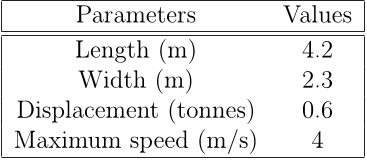Q2. What are the future works mentioned in the paper "A constrained a* approach towards optimal path planning for an unmanned surface vehicle in a maritime environment containing dynamic obstacles and ocean currents" ?
The approach is found to be robust, computationally efficient and can be extended for real time path planning of USVs in confined water. In future work, it is planned to extend the work in development of a path follower approach working in conjugation with proposed approach for a reactive path planning in scenarios involving close encounters. A challenging 28 extension of the current work lies in fact of finding a heuristic cost function which can take into account rules of the COLREGs without compromising the optimality and computational effort required to find a feasible trajectory.





